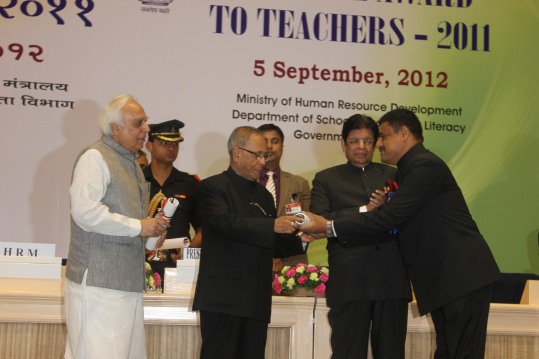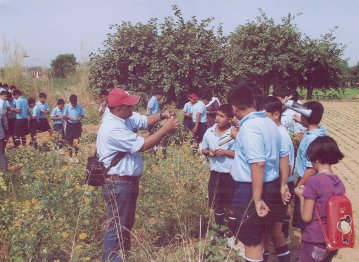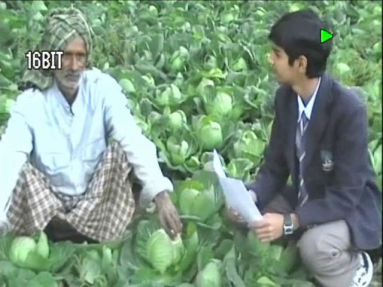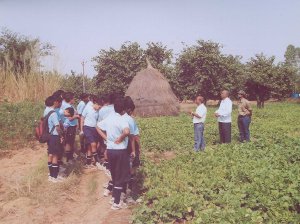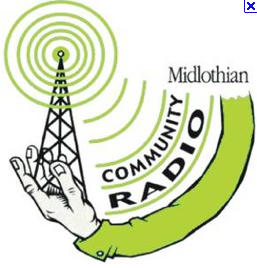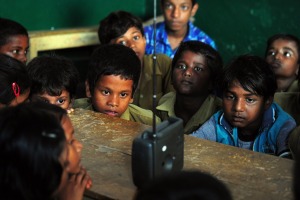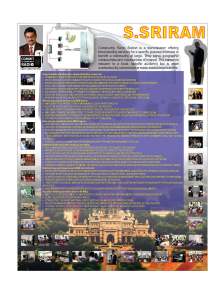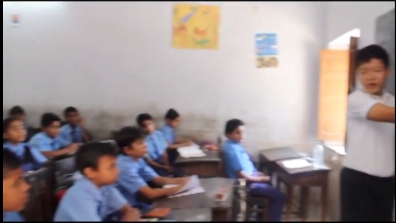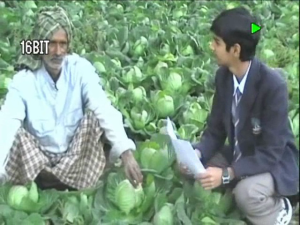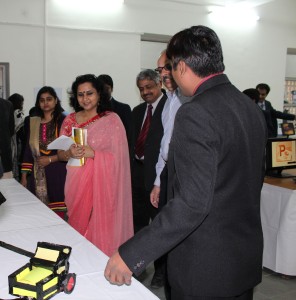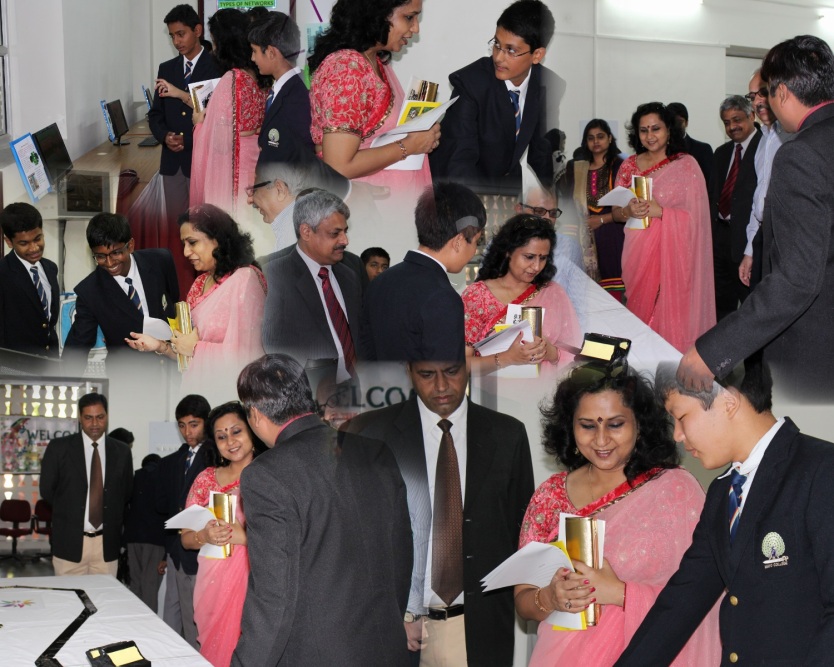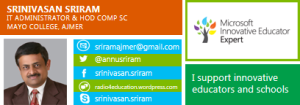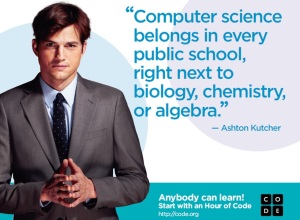I was born in Trichy and educated in Chennai, Tamil Nadu. My father was an Accounts Supervisor in Tamil Nadu Electricity Board, now leading a retired life and mother a homemaker.
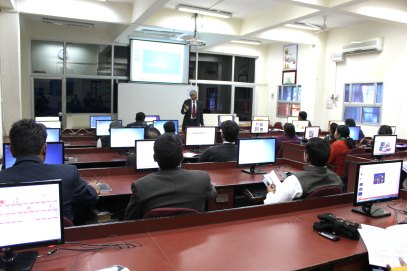
I was among the first batch of computer science students when computer education was introduced to our Higher Secondary School curriculum in 1983. Those days, a computer was a rarity and working on it was both a privilege and an achievement. This was probably the beginning of journey that went on to impact many young lives. The device fascinated me so much that I would ask my computer teacher for the keys of the room after school hours and would spend time programming on GW-BASIC & FORTRAN. I recollect the first program I tried making was similar to the Kerry Packer Channel 9 Cricket Series scoring display which was famous and introduced for the first time in cricket matches.
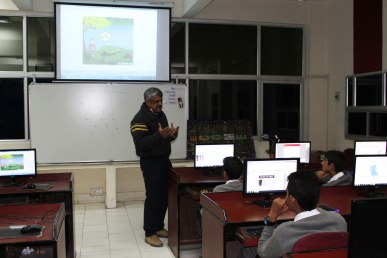
Presently, I teach Computer science at Mayo College, Ajmer, INDIA. However, teaching was an opportunity that came my way, rather than one that was actively pursued. I became a teacher by chance and not by choice. Soon I began working passionately to make a difference, and while still new to the profession, I realised very quickly that there was no profession nobler than teaching. And I haven’t looked back since.
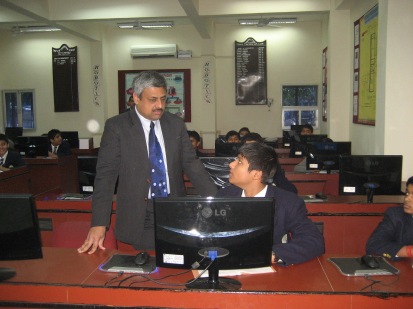
Studying Computer Science at a time when the Internet was accessible only sparingly, my first encounter with the Internet could only be described as “thrilling.” Using a dial-up connection, I browsed websites and downloaded material of educational value and some utilities that would help the computers in the department stay safe from viruses. It was then, when Information Technology was in its nascent stages in India that I became certain that this would revolutionise the way the world communicates. It was only a matter of time before technology began to make inroads into pedagogy and I embraced this welcome intrusion. For a computer science teacher, it was but natural that ICT was an integral part of his classes, but he knew, however, that ICT had the potential to enhance teaching-learning practices in the School.
I began experimenting with technology while I was still new to the profession. I worked zealously, and was eager to learn new methods and innovate in order to give my very best to students. I acknowledge, gratefully, the influence my colleagues have had upon me. I had the opportunity to work with some of the brightest facilitators in school—teachers with 35-40 years’ experience. Shri Raghuraj Singh, HOD-General Science, Shri Ramesh Shah, HOD-Mathematics who later went on become the Vice Principal and Shri O P Agarwal, Bursar are some of the people who made a significant impact on my life. Later in my career, Mr Pramod Sharma, the then Principal significantly contributed to my growth by giving me opportunities that no other school would have given. I learnt from them what it meant to be a good teacher, and I am eternally grateful to them for their guidance and help. It was their dedication, integrity, loyalty and skills that inspired me to go further in my teaching career.
Since I worked in a private school, funds to integrate technology into the educational process were readily available. I would try and buy equipment or technology that would be of use to the students and make their learning experience more interesting. I have always believed that ICT would revolutionise the education industry and hence I have always endeavoured to procure the latest technology available at any given time, even though it often may have been prohibitively expensive. My strategy has been more than sufficiently validated. Today, in a world that depends almost entirely on technology, ICT is a tool which has brought about a complete change in the way teachers teach and students learn. Technology has reached out to millions of people in remote places, and has connected what was once remote and has improved accessibility.
When people were hesitant to engage in such radical reworking of traditional pedagogy, I insisted that those who did not accept change would be left behind. Mayo College is reaping the rich harvests of seeds carefully sown. Today, students in the school understand concepts better and performances have improved significantly. I would like to acknowledge the involvement of the School Management as they have always supported me in every endeavour I undertook and have been very progressive in their approach. Lt Gen Aditya Singh (Retd) and Shri V P Singh Badnore, MP who have been at the helm of affairs in Mayo College in the past have contributed immensely towards what Mayo College is today in terms of IT infrastructure.
However, there were initial roadblocks, one of the most significant one being limitations in terms of the competency of teachers. Gradually, teachers accepted that ICT can in fact enhance their teaching methods. For students, teachers are no longer boring faces that appear in classes, lecture and then leave. Mayo College, Ajmer, was the first to encourage computer literacy among the schools in the country, as well as the use of ICT in pedagogy and hence the journey for me and some of my colleagues was uncharted. Implementation was a huge gamble. Without anyone to guide us, we had no idea of what results to expect as the success of implementation depended primarily upon the co-operation of all the people involved. Older teachers were unwilling to change the tried and tested practices. To add to complications, the school management was keen to see returns on its investment.
Eventually, problems were overcome. Regular counselling and orientations sessions with teachers ensured that technology entered into classrooms. I had to update my own skills and knowledge as well. First, I had to understand new technologies, analyse them and choose the best for the school. Since I had no prior knowledge in emerging technologies, it involved a lot of research and late hours at work but I enjoyed it because it enriched my knowledge. The school is spread over an area of 200 acres and it was very challenging to devise a cost effective, campus-wide LAN solution to make technology accessible in classrooms, boarding houses, departments, ICT Labs, staff residences and administrative blocks.
The implementation process of “PROJECT IT” between 2001 and 2003 is still fresh in my mind. Based on the inputs and keeping in mind Indian sensibilities, a broad road map was laid for effective implementation of an ICT infrastructure that would help all stake holders. In 2001, the implementation of a campus wide LAN was planned and the same implemented in 2003. The network was designed to cater to 360 nodes (systems) in the initial phase and was capable of expansion, as a high capacity fibre cable was used as backbone. All the edge switches had the capacity to expand and accommodate larger numbers for expansion. The Network Layout that was designed originally was modified to bring in more redundancy at the outer layers so that the entire system can be well maintained with minimum downtime. The Network that was planned was very robust with a 3 tier architecture-Core, distribution and access. The network was designed to be a fully manageable CISCO solution with a mix of ring and star topology to maximize redundancy. Universal standards for cabling and documentation were followed. CISCO LAN Management software was used for effective LAN Management in managing systems that were spread all over the campus. Approximately 12 kms of multimode fibre and 5 kms of single mode fibre in addition to 15 kms of UTP cabling and 5 kms of STP cabling have been used to complete this network. Approximately 25 Kms of fibre, UTP and STP and LRE cabling were required to complete the network.
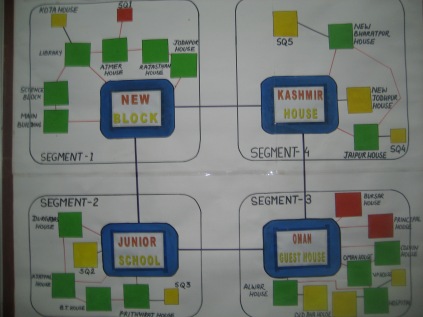
For the purpose of security, all students and teachers have an individual login with adequate server space and an email id configured on a local mail server for effective communication. The next step was to have an effective Management Information System (MIS) in place to ensure that necessary action is taken at the right time to maximize efficiency. Again, it was a big learning experience while implementing a fully functional e-IMS for the school to integrate the functionality of various departments.
A 20 Mbps Leased line caters to the needs of all stake holders to enable them connect with the outside world. This project facilitates the e-learning process that has become a benchmark in today’s learning curriculum. In addition to providing Internet facility to students for research work and mailing purposes, the network is being extensively used for project work and career guidance. It also facilitates easy communication between staff and students and vice-versa any time in the day, in addition to helping students keep in touch with their parents. The students can share resources among themselves, thereby saving time and increasing productivity. They can also get round-the-clock assistance from the staff during vacations. The Intranet facility also helps the students to share amongst each other and access offline material stored on the servers. With time, most areas of the campus became hot spots so that the system can also cater to students who bring their own Laptops/ Notebooks/Tablets.
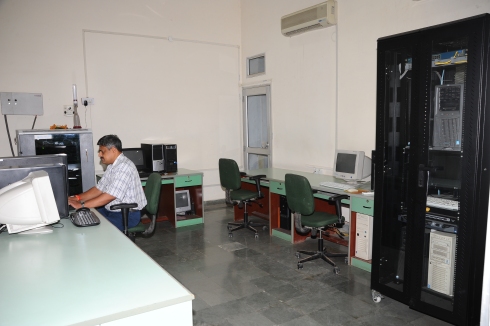
In order to keep teachers and students up to date, training programs at regular intervals is an integral part of the school routine and this contributes towards the success of the program. It is mandatory for all staff members to attend ICT workshops and orientation programs are held periodically. The teachers are then expected to implement what they have learnt and to use the methodology/technology in classrooms. There are deadlines for such initiatives and their involvement is graded in the annual appraisal. Students are exposed to new technologies/courses from time to time and experts in various fields are invited for lecture-demonstration sessions which have helped the students to become passionate about the ICT initiatives of the School. A nurturing environment has enabled both students and teachers to take these initiatives seriously.
Students with a knack for Computer Science/Programming stay back after school hours and work on ICT as a part of co-curricular activities. These students mentor their peers, thus generating a large set of skilled students who help the school in all its ICT initiatives. These students have represented the school in various IT competitions and have often made the school proud.
The school encourages teachers and students alike to take part in collaborative projects that are often inter-disciplinary. Video conferencing sessions are held regularly to interact with students in schools abroad to understand their culture, their problems and how teaching-learning transactions are facilitated in their school.
Educational content loaded on the school’s servers have the capability to assess the thinking skills of students in terms of real time applications, numerical solutions and case studies. It also caters to the needs of differently abled children. This allows teachers to effectively address the entire spectrum of students with different learning abilities. The teachers use the content to train students to develop higher order thinking skills and the student can, after school hours, spend time on the educational content available through the Intranet to hone his skills with collaborative study amongst the peer group.
The IT department have played an enormous role in involving students in projects that have socially relevant outcomes. Every year, one theme is selected and students participate enthusiastically. Students do extensive research, collect material from various sources, discuss the pros and cons of implementation and make field trips, if necessary. They also conduct road shows and ‘nukkad nataks’ (street plays) to highlight the issue and distribute pamphlets to the public to create awareness about the theme.
Tapping into my students’ innate desire to rise to challenges and overcome them, my award winning project was a successful attempt to create a skilled set of students who learnt to apply theoretical knowledge in ways that can benefit society. The project aimed to provide a platform for collaborative learning and expose students to real world issues. I guided the members of my Computer Club to work on Genetically Modified Crops, because it is of particular significance to Indian farmers and Indian agriculture. The Club decided to organise a group of volunteers who would first understand what Genetically Modified Crops are, the pro and cons of using them and then study the issue carefully, keeping in mind Indian sentiments and interests. Members of the club were taught to introspect, listen to opinions of experts, interact with farmers to educate them on this new technology, receive their feedback, and then, finally, offer an informed opinion. The project was based on collaborative study and aimed to clarify the role of GM Crops and ascertain whether it could be a boon to the nation and the people of the country or whether its advantages are exaggerated. The project tried to highlight to students the value of Genetically Modified crops as a genuine solution.
The most important learning outcome of such projects has been collaboration. Students learn to co-exist within a heterogeneous group, while learning to create a finished product from inputs that have been obtained by individuals fulfilling asymmetric roles. This exercise has been successful in teaching flexibility to youngsters in order to arrive at a common goal. Students have taken to effective web browsing for collecting inputs for the project, thereby improving their research skills. It has given every student in the group the right exposure, confidence and a sense of self-worth, as his individual contribution has a part to play in the final product. This has also encouraged collaborative student-faculty participation in generating awareness on proper ethics, which enhances the personality of a student and instils leadership skills amongst students.
Winning the National Award has certainly been the highlight of my career but more than that, it has awakened me to the fact that there is so much more to do. The first thing I decided to do is to assist other schools to adopt this wonderful medium effectively. I feel that the experience I have gained from implementing an effective ICT solution in my school has enriched me and I look forward to sharing these experiences in a big way so that others can also benefit. I have accepted this award on behalf of the scores of teachers in every nook and corner of this country that are doing their bit to enhance teaching-learning in the classroom using the limited ICT resources available to them. And I also pledge that I will do my best to make education a better and joyful experience for other children too that are not so lucky or privileged.
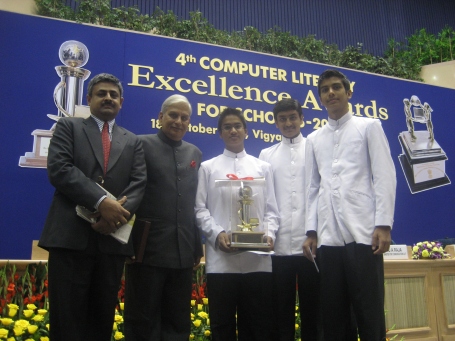
I have believed dedication in what you do to provide the best will produce good results one day. Receiving the School of Educators (SOE) Global Education Award for Innovation in ICT and the Knowledge Resource Development and Welfare Group (KRD&WG) International Research and Excellence Award in 2012 has allowed me to interact with many global peers in the industry and learn many innovative methods of teaching and research. Mayo College also received the Best IT Enabled School in the state in the 4th National Computer Literacy Awards by Government of India and in 2004 bagged the First Prize for Best use of IT in Schools through creative and effective implementation of Technology by Society for Unaided Private Schools of Rajasthan.
The road ahead is clear. I plan to implement new technologies that will be useful in making the learning experience more fruitful for students. In addition to this, I plan to increase the frequency of ICT workshops for teachers and train them on effective implementation measures. Students will also be exposed to new technologies/tools and I am very keen to implement some very popular Open Source and cloud based technologies/tools that have made a great impact in education of late. I also dream to create the foundation for student/teacher collaborative projects with schools in India and abroad in order to facilitate a more expansive learning experience. As a social responsibility, during the vacations, I teach IT to underprivileged children of nearby schools who do not have the exposure to IT in their schools.
Learning, unlearning and relearning is a continuous process that teachers must participate in. IT/ICT should be a regular part of the school curriculum. The school management/Government should provide basic infrastructure facilities in every school and also ensure that at least a few teachers are trained every year in ICT for effective implementation.
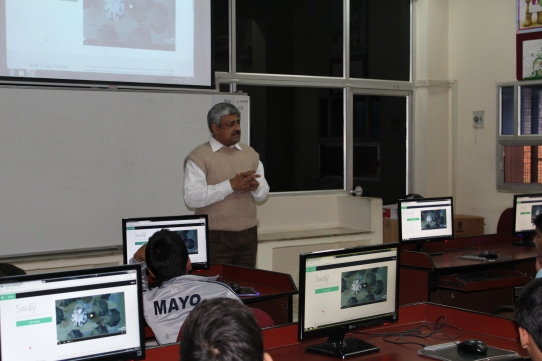
While ICT has been important in revolutionising the education system, an issue that others too have raised is how much is too much? The traditional education system too continues to facilitate the growth of exceptional individuals who perform successfully and contribute socially. So, is technology necessary? In my opinion, there is no doubt that technology helps students in their education to a great extent but an overdose may kill the very instincts that are so essential for them to lead a normal life. Today, I can emphatically say that ICT is a tool which has brought about a complete change in the way teachers teach and students learn, and have helped technology reach millions of students in remote areas that would have otherwise been neglected. The students of tomorrow are going to become increasingly smarter, and therefore the teachers have a big challenge to raise themselves to that level so that they can deliver meaningful learning experiences.
